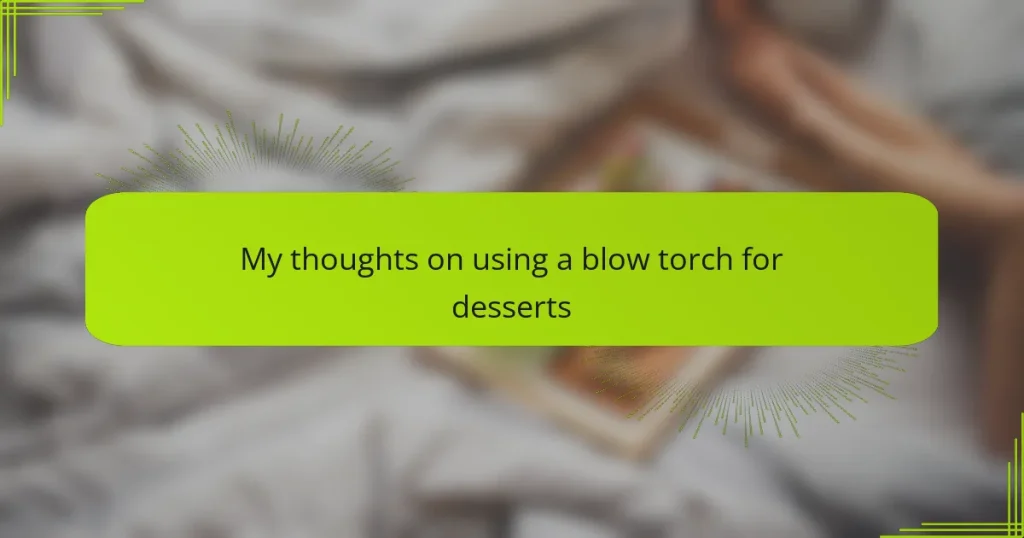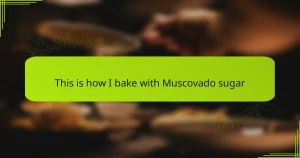Key takeaways
- A blow torch provides control and precision for caramelizing desserts, transforming textures and enhancing flavors.
- Select a blow torch with adjustable flame settings and safety features to simplify the process and ensure a secure grip.
- Always prioritize safety by working in a well-ventilated area and keeping flammable materials away from the flame.
- Common issues include inconsistent flame size and flare-ups; maintaining your torch and adjusting gently can prevent mishaps.
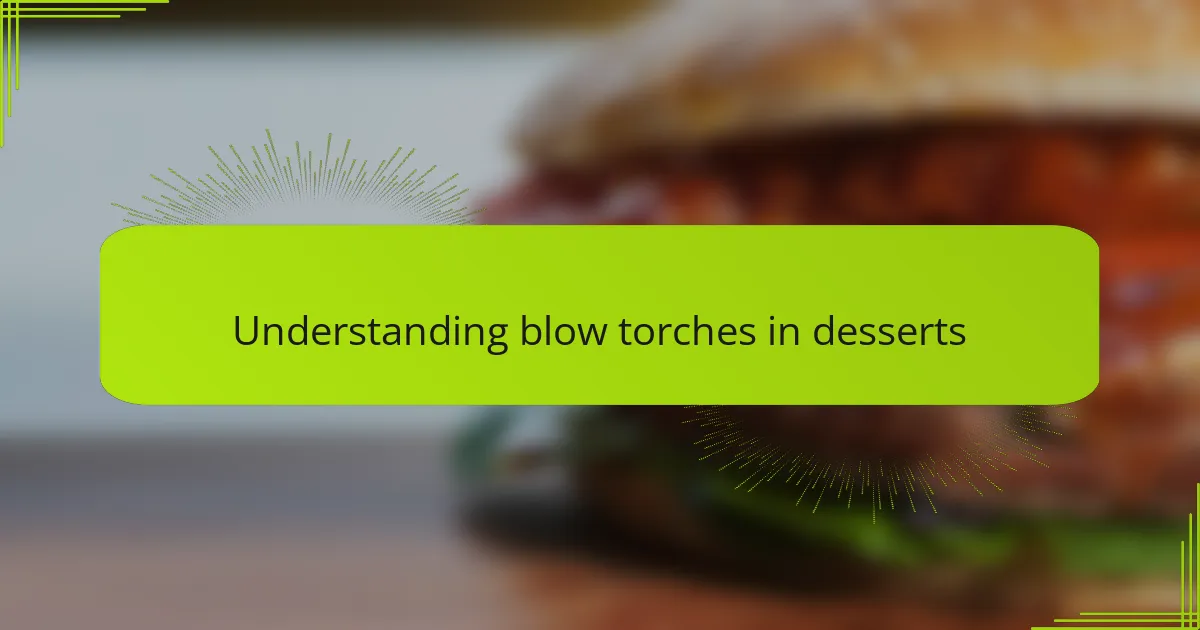
Understanding blow torches in desserts
Using a blow torch in desserts is more than just a flashy technique—it’s about control and precision. I remember the first time I tried caramelizing the sugar on a crème brûlée; the torch gave me that perfect golden crust that an oven just can’t achieve. Have you ever wondered how chefs get such a delicate char without burning the whole dessert? The blow torch answers that question beautifully.
What fascinates me is how this tool transforms textures instantly. It’s not just about melting sugar; it adds a slight smoky hint and a crunchy layer, elevating simple treats into something memorable. From my experience, mastering the blow torch feels like learning a secret handshake in the dessert world.
Of course, understanding the right distance and flame intensity is key to avoid turning your dessert into a mini bonfire. I’ve had my fair share of mishaps, but each one taught me how adaptable and forgiving the torch can be—if you respect it. Isn’t that part of the fun, though? Experimenting until you get that perfect sear.
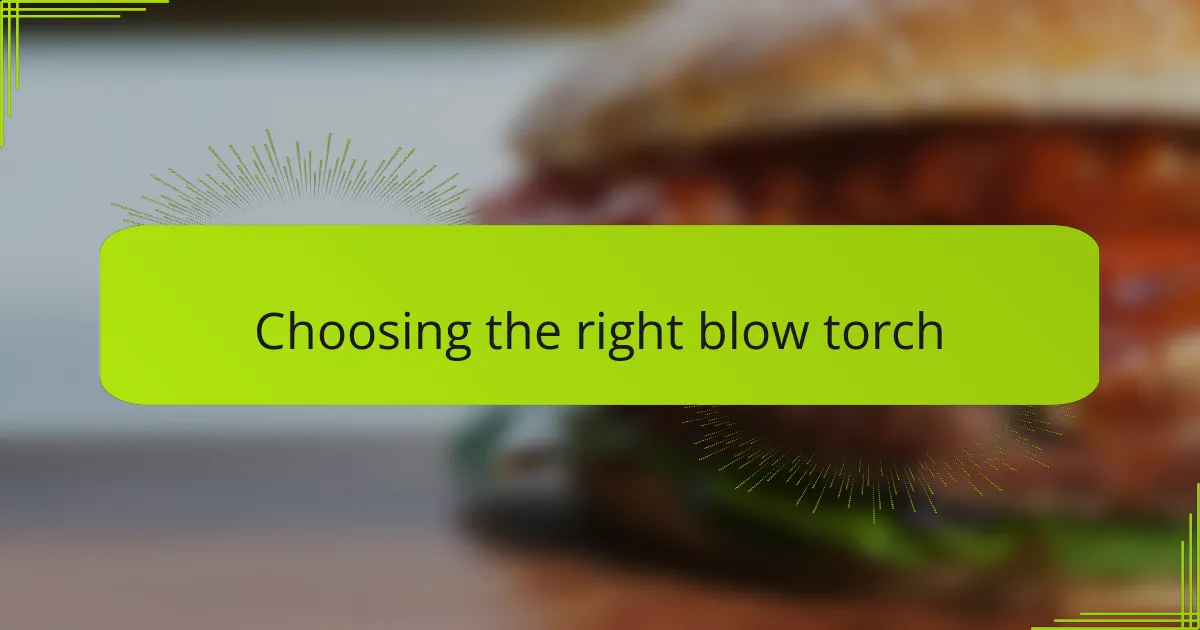
Choosing the right blow torch
Picking the right blow torch can feel a bit overwhelming at first. I remember staring at rows of gadgets, wondering if I really needed the fanciest model or if a simpler one would do the trick. What I found is that it’s less about bells and whistles and more about how comfortably you can handle the torch and control the flame.
One thing I quickly realized is the importance of a torch with adjustable flame settings. It gave me the freedom to start small and build intensity as I grew more confident—without the fear of instantly scorching my dessert. Too often, beginners get a cheap, single-flame model that’s either too weak or too fierce, and that’s just asking for trouble in the kitchen.
Also, safety features can be a game-changer. A reliable ignition system and a sturdy base made a huge difference for me when I had to switch hands or set the torch down between uses. Don’t you want something that feels secure, especially when working with fire so close to your sweet creations? It’s these little practical details that turned using a blow torch from intimidating to truly enjoyable for me.
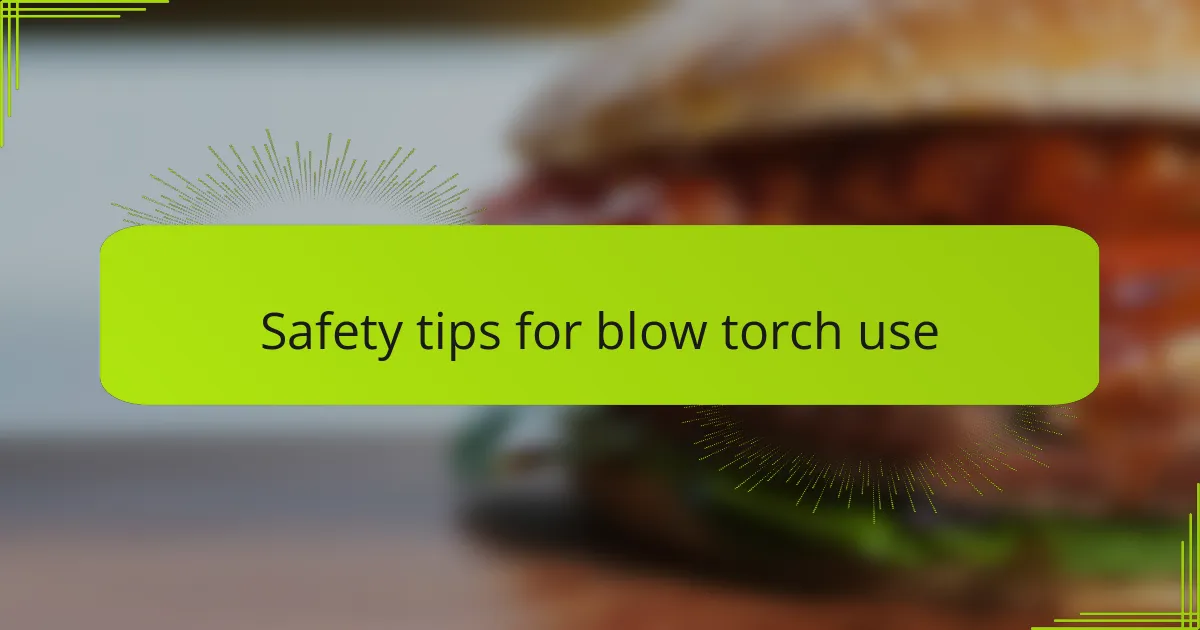
Safety tips for blow torch use
Handling a blow torch means respecting its power—one careless move and you could end up with a burnt finger or worse. I learned early on to always work in a well-ventilated area and keep flammable materials far away; it’s amazing how easily things can catch fire if you’re not paying full attention. Have you ever found yourself distracted mid-flame? Trust me, it’s a moment you don’t want to experience with a torch in hand.
Another tip I swear by is never pointing the flame toward yourself or others, no matter how tempting it is to get a quick caramelization. It sounds basic, but in the thrill of perfecting that golden crust, safety can slip your mind. I usually clear my workspace of anything unnecessary and keep a fire extinguisher or a damp cloth nearby—better to be over-prepared than sorry when working with open flames.
Finally, I always make sure the torch is completely cool before storing it away. There’s something oddly satisfying about that cooling-down period, like the tool’s way of resetting for the next dessert adventure. Have you ever accidentally grabbed a still-hot torch? I have, and the sharp reminder was a lesson I won’t forget. Safety isn’t just rules; it’s part of respecting the craft—and your fingers—while chasing that perfect brûlée.
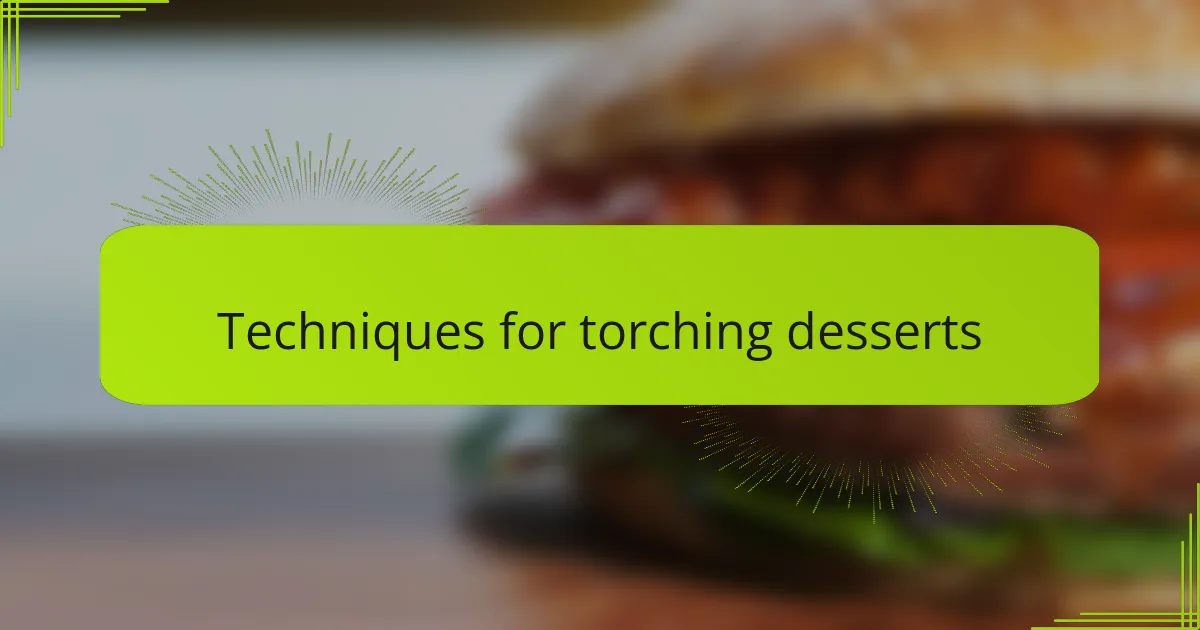
Techniques for torching desserts
One technique I rely on is keeping the torch at about two to three inches from the dessert’s surface. This distance gives me enough room to control the heat without scorching the sugar too fast. Have you ever gotten impatient and held the flame too close, only to end up with a bitter, burnt crust? That’s a lesson learned for me early on.
I also like to move the flame continuously in small circles rather than holding it in one spot. This helps achieve an even caramelization and prevents hot spots that can turn parts of the dessert black. It feels a bit like painting with fire—delicate but deliberate, which I find oddly satisfying.
Another tip from my experience is to start slow with low flame intensity and build up as needed. It’s tempting to crank up the heat to get that golden color immediately, but patience pays off. I’ve burned plenty of desserts rushing the process, and each mishap taught me the value of gentle coaxing rather than fierce blasting. What’s your go-to torching rhythm? I’d bet you’ll find your own perfect pace with practice.
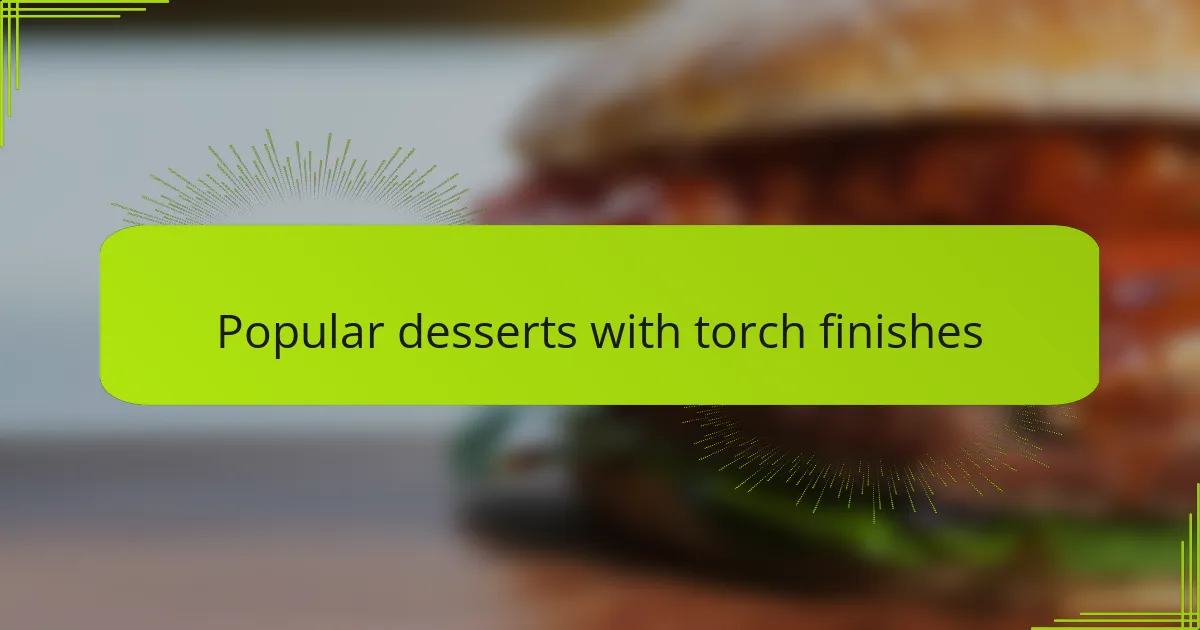
Popular desserts with torch finishes
When I think about popular desserts finished with a blow torch, crème brûlée immediately comes to mind—it’s the classic example where that crunchy caramelized sugar top makes all the difference. I still recall the first time I nailed that perfectly crackling crust; it felt like a small victory, as if I’d unlocked a secret corner of dessert magic. Have you ever noticed how that caramel layer adds both texture and a subtle depth of flavor that no oven can replicate?
But it’s not just crème brûlée that benefits from a torch’s touch. Think about meringue-topped pies or tarts—the way a quick flame kiss adds just the right toastiness, creating a beautiful contrast between soft and crisp. I often find myself experimenting with s’mores-inspired desserts, torching the marshmallow topping until it’s golden brown, and watching the ooey-gooey center transform into a gooey delight right before my eyes.
Even beyond sugar, a blow torch can bring out nuances in desserts like cheesecakes or even fruit crisps by lightly caramelizing toppings or adding a smoky note that surprises the palate. Have you ever tried torching thin slices of pineapple or peaches? That subtle caramelization lifts the fruit’s natural sweetness into a whole new level, making your dessert not just a treat, but an experience worth savoring.
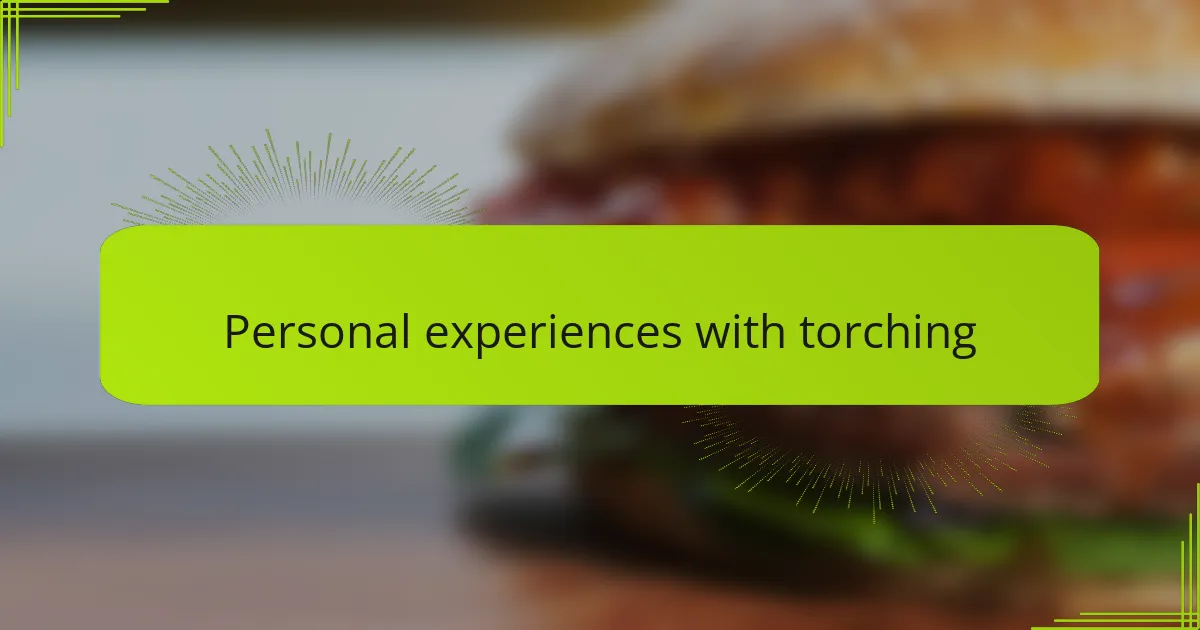
Personal experiences with torching
I remember the first time I used a blow torch on a dessert—I was nervous, flame in hand, wondering if I’d end up with a burnt mess. To my surprise, the torch gave me immediate control, and that golden caramel crust on my crème brûlée felt like a reward I’d earned through a little daring. Have you ever felt that thrill when a risky kitchen experiment actually works out?
Sometimes, though, my over-eagerness got the best of me. There was one time I held the flame too close, turning my perfectly set sugar crust into a smoky, bitter patch. It was frustrating, but it also reminded me that torching requires patience and respect. Those small failures have been my best teachers, nudging me to slow down and trust the process.
What I love most is how torching transforms the moment you’re about to serve. That final touch of flame always makes me feel like a magician, turning something ordinary into a showstopper. Doesn’t it make you savor the dessert differently, knowing it was finished with just a flicker of fire?
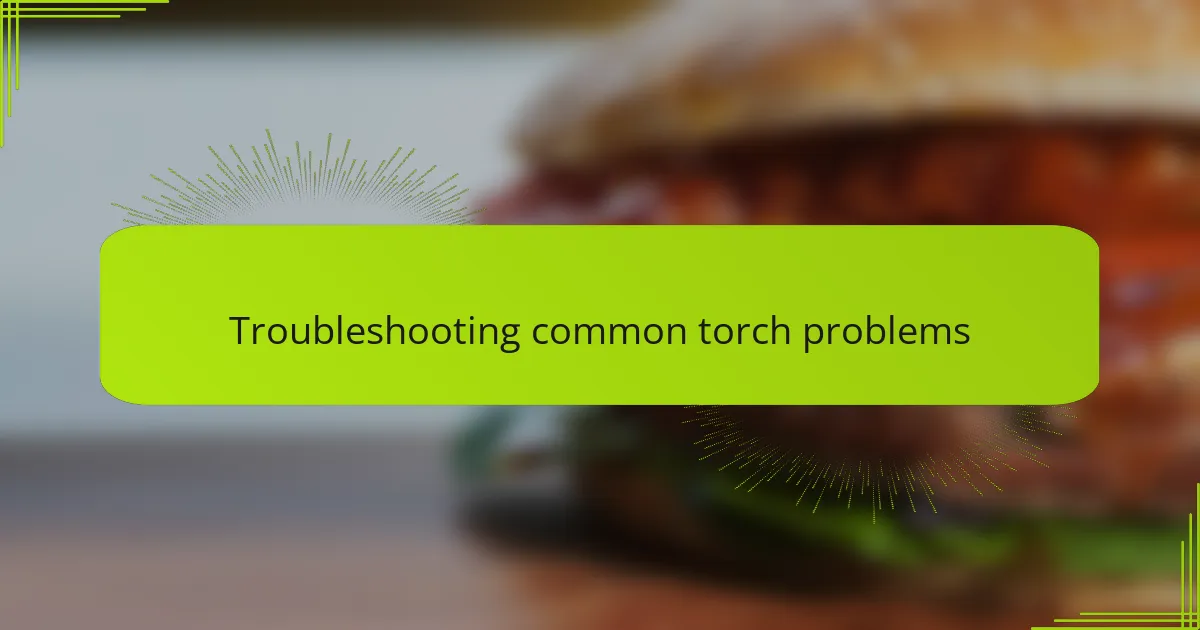
Troubleshooting common torch problems
Sometimes, the biggest challenge with a blow torch is inconsistent flame size. I once panicked when my torch sputtered mid-caramelization, leaving uneven spots on my dessert. If your flame acts up, check the fuel level and nozzle for clogs—small fixes that saved me from starting over more times than I care to admit.
Another common hiccup is the dreaded flare-up. I had a moment when the flame suddenly flared too high, nearly turning my kitchen into a disaster zone. What helped me was learning to adjust the flame control slowly and keeping a steady hand; it’s about respect and patience, not urgency, which I think is the secret to taming that fiery beast.
And let’s not forget torch misfires or failure to ignite, which can leave you frustrated right when you’re ready to impress. I remember that helpless feeling, standing over a dessert, torch dead in hand. Sometimes, a thorough cleaning or replacing the fuel cartridge is all it takes—simple things that can save your dessert’s appearance and your sanity. Have you had any torch troubles turn into unexpected lessons? I’m sure you have, just like I did.
